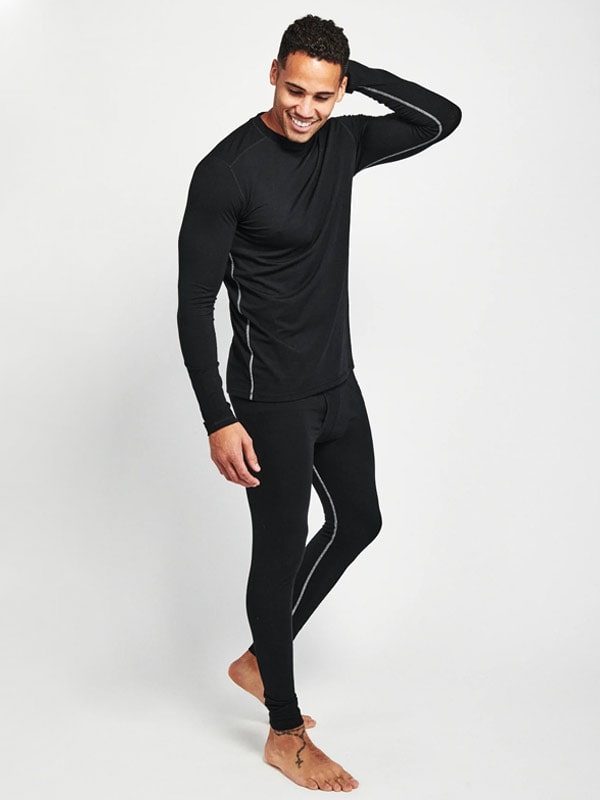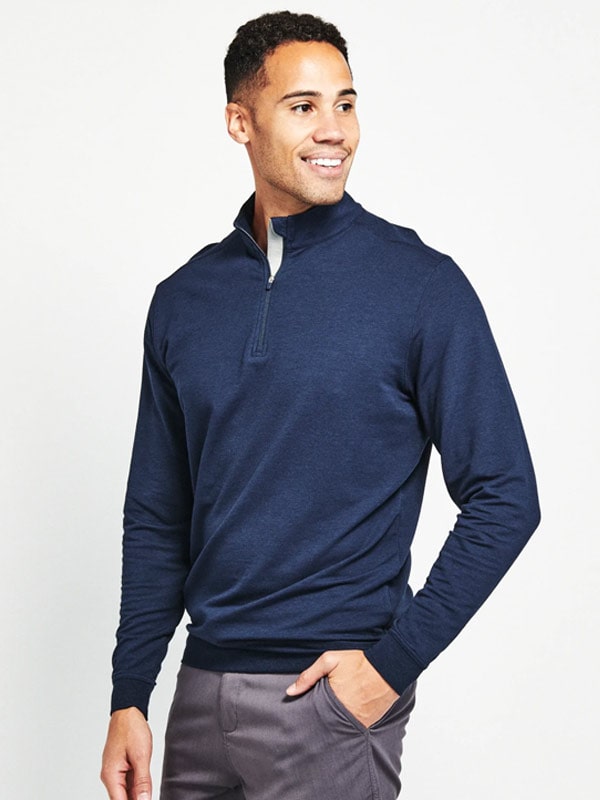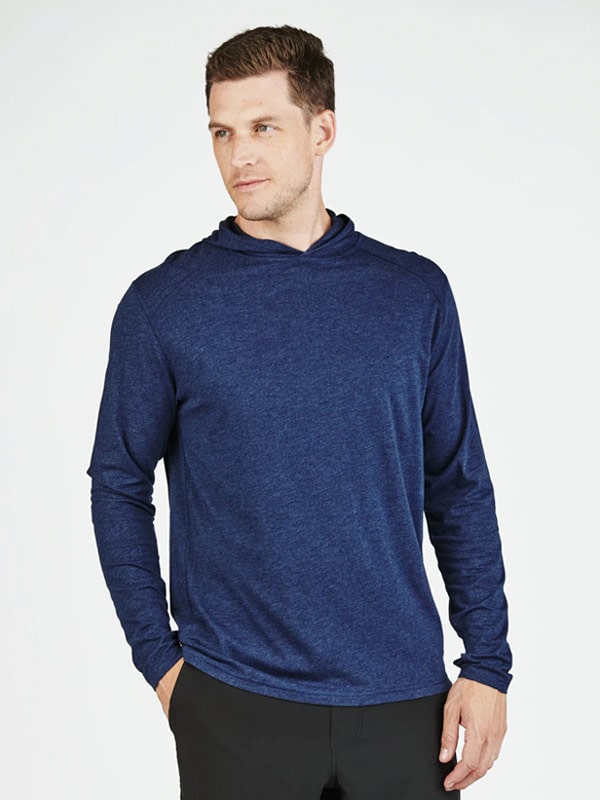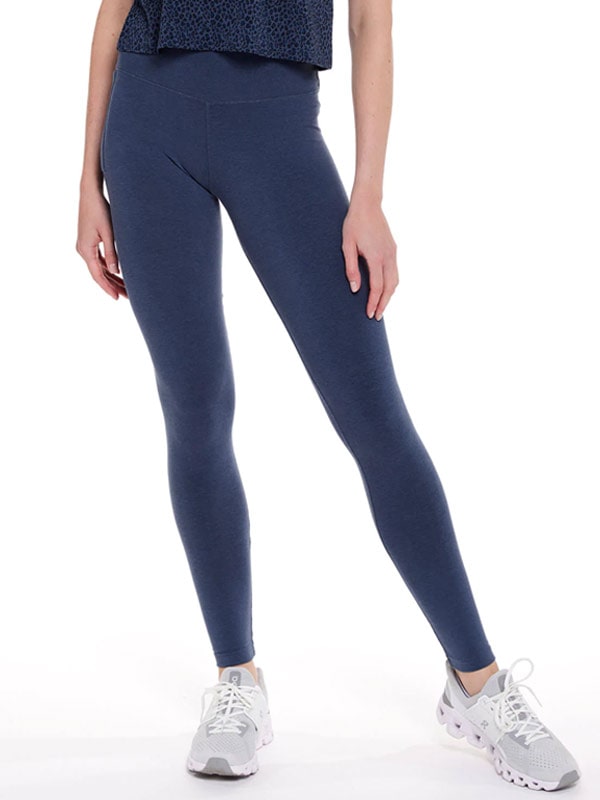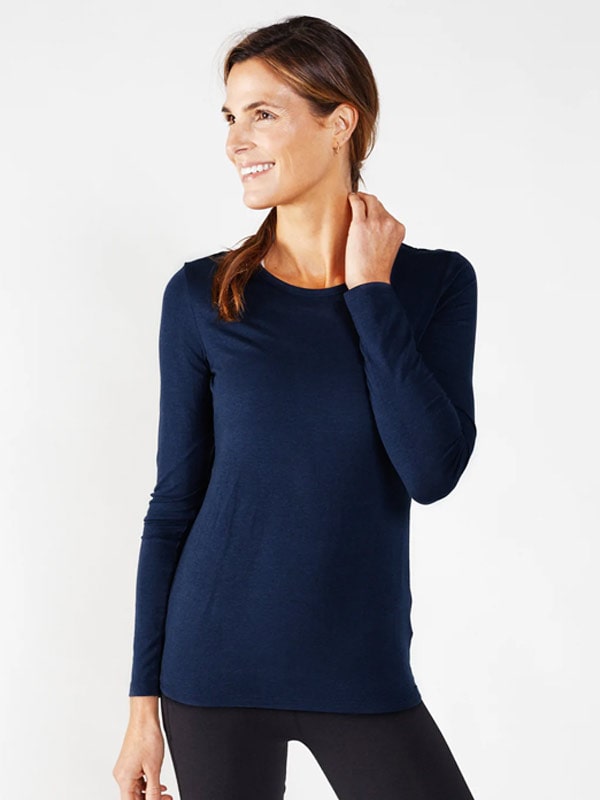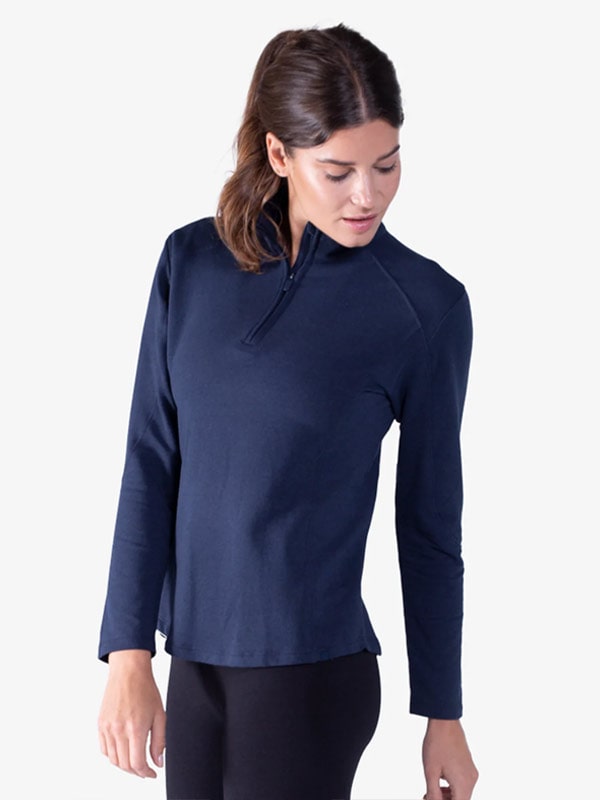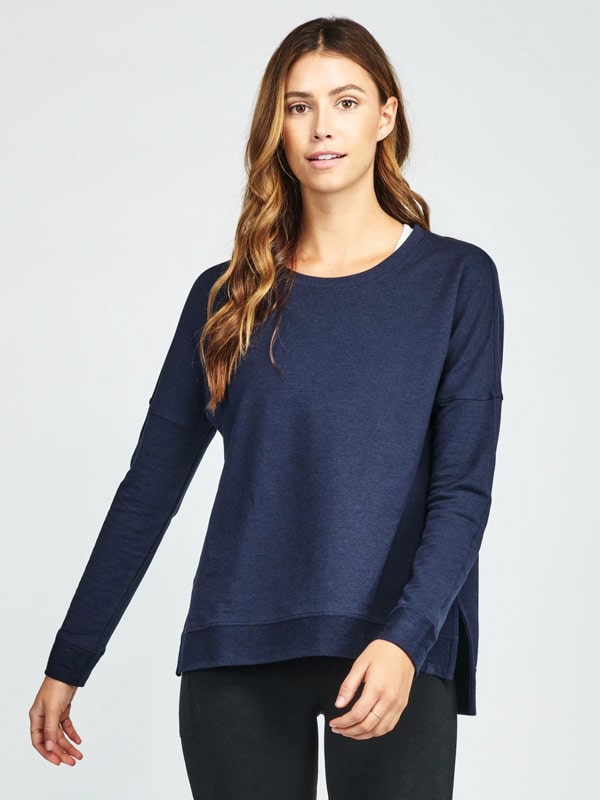Running Apparel Lifespan: How Often Should You Replace Your Running Gear?
Running is a popular and invigorating form of exercise, but it's crucial to maintain your running gear to ensure both performance and injury prevention. With the constant pounding of feet on pavement and the enduring exposure to sweat and elements, knowing when to replace running shoes and other apparel is vital for every runner. This guide will walk you through the lifespan of various performance running apparel, including men's running gear, and offer key insights on when it's time to refresh your wardrobe. From understanding the wear and tear on moisture-wicking shirts to determining the optimal running apparel for your needs, we aim to provide you with clear, engaging, and informative advice to keep you at your best on the track or trail.
The Importance of Quality Running Gear
Impact on Performance and Comfort
Quality running gear significantly impacts both performance and comfort. Ill-fitting or worn-out apparel can lead to discomfort, chafing, and even injuries, which can hinder a runner's performance. For instance, running shoes that lack adequate cushioning or support may result in strain or injury over time. Similarly, moisture-wicking shirts are essential to keep sweat at bay, preventing irritation and maintaining optimal body temperature. High-quality materials ensure that your gear remains durable and effective, even through intense workouts. Furthermore, investing in optimal running apparel enhances comfort by providing a better fit and flexibility, allowing for a full range of motion. Ultimately, the right gear can make a substantial difference in a runner's experience, promoting better results and reducing the risk of running injuries. Paying attention to the lifespan of your running clothing and replacing items when necessary is crucial for maintaining your performance and comfort levels.
Running Injury Prevention Tips
Preventing running injuries is closely tied to the quality and condition of your running gear. First, ensure your running shoes are replaced regularly, typically every 300 to 500 miles, to maintain adequate cushioning and support. This helps prevent common injuries like shin splints and plantar fasciitis. Opt for performance running apparel that offers proper fit and moisture-wicking properties to avoid skin irritation and chafing. Additionally, pay attention to the fit of your sports bras and leggings, as these items contribute significantly to comfort and support during runs. Incorporating a proper warm-up routine and stretching exercises can also mitigate injury risks by preparing your muscles for the physical demands of running. Lastly, listen to your body and allow time for rest and recovery when needed. By integrating high-quality gear with sound running practices, you can significantly reduce the likelihood of injury and enhance your overall running experience.
Evaluating Your Current Gear
Regular evaluation of your running gear is essential in maintaining performance and comfort. Start by inspecting your running shoes for signs of wear, such as uneven tread, reduced cushioning, or discomfort during runs. These are indicators that it's time to replace running shoes. Examine clothing items like moisture-wicking shirts and leggings for fabric thinning, loss of elasticity, or persistent odors, which suggest it's time for an update. Pay close attention to the fit of your gear; items that have become too loose or tight may not provide the support you need. Additionally, consider your personal running needs and any changes in your routine that might necessitate different apparel. For instance, if you've increased your mileage or changed your running environment, your gear may need to adapt. Keeping track of these factors helps ensure your running clothing lifespan aligns with your performance goals and injury prevention needs, enabling you to run safely and effectively.
Perfect Running Apparel
 |
|
| Carrollton Fitness T-Shirt |
Innovative Features of Carrollton Fitness T-Shirt
The Carrollton Fitness T-Shirt stands out among running apparel for men due to its unique blend of materials and thoughtful design. Composed of 52% organic cotton, 43% bamboo viscose, and 5% elastane, the shirt offers a lightweight feel with superior breathability. Its moisture-wicking fabric ensures that you remain dry even during intense workouts, while the anti-odor properties keep you fresh throughout the day. Additionally, the shirt provides UPF 50+ sun protection, making it suitable for outdoor activities. The ergonomic design includes a relaxed fit, no top shoulder seam, and a four-way stretch for unrestricted movement. This combination of features not only enhances performance but also ensures comfort, making it ideal for transitioning from activewear to casual wear. The Carrollton Fitness T-Shirt, with its sustainable materials and innovative construction, truly redefines fitness fashion.
 |
|
| Recess 7in Unlined Short |
Benefits of Recess 7in Unlined Short
The Recess 7in Unlined Short is a standout choice in men's running shorts, offering a perfect balance of comfort and performance. Made from a lightweight stretch-woven fabric, these shorts provide an unrestrictive fit that is ideal for high-impact activities. Their moisture-wicking capabilities ensure quick drying, keeping you comfortable and dry during workouts. The design features include open side pockets and an additional zipper pocket, offering convenient storage for essentials. Laser-cut ventilation and side splits with reflective details enhance breathability and visibility, making these shorts suitable for any time of day. The elastic waistband with a drawcord ensures a secure and adjustable fit. These features, combined with a relaxed, no-liner design, make the Recess 7in Unlined Short a versatile option for both activewear and casual wear. Whether you're running or engaging in other fitness activities, these shorts provide the functionality and style you need.
Essential Athletic Apparel
 |
|
| Velocity 8in Unlined Training Short |
Velocity 8in Training Shorts
The Velocity 8in Unlined Training Shorts are a key component of any runner's wardrobe. These running shorts are meticulously crafted from a blend of 92% polyester and 8% spandex, offering the perfect balance of flexibility and durability. The four-way stretch fabric ensures unrestricted movement, essential for vigorous training sessions. Notably, the shorts feature a water-resistant finish, making them suitable for various weather conditions. The elastic waistband with an inner drawcord ensures a secure fit, while open side pockets and a back zipper pocket provide ample storage for essentials. Reflective side details enhance visibility, crucial for early morning or late evening runs. Whether you're hitting the gym or running errands, these shorts offer comfort and style, making them a versatile addition to your athletic apparel collection.
 |
|
| Swift Lightweight Hooded Windbreaker Jacket |
Swift Lightweight Hooded Jackets
The Swift Lightweight Hooded Windbreaker Jacket is an indispensable piece of training gear for men. Made from 92% recycled polyamide and 8% elastane, this lightweight jacket is designed for optimal performance and environmental consciousness. Its water-resistant and wind-resistant properties ensure you're prepared for unpredictable weather, keeping you dry and comfortable during outdoor activities. The jacket's four-way stretch fabric allows for a flexible fit, enabling a full range of motion. Featuring a hood with elastic binding and side zipper pockets, it offers practicality and style. The approximately 28.5-inch length for size L provides adequate coverage without compromising on mobility. Whether you're embarking on a long run or heading out for a casual adventure, this jacket seamlessly blends functionality with a fashionable edge, ensuring you remain confident and protected in any setting.
 |
|
| Carrollton Lightweight Hoodie |
 |
|
| Recess 7in 2-in-1 Short |
Essential Running Apparel: From Function to Style
Breathable Fabrics for Comfort
Breathable fabrics are crucial in running apparel, providing unmatched comfort during workouts. Tasc Performance integrates materials like bamboo viscose and organic cotton in their designs. These fabrics promote superior breathability, ensuring that runners remain cool and comfortable, even during the most intense runs. The Carrollton Lightweight Hoodie exemplifies this with its MOSOtech fabric blend. This blend is not only soft but also allows air to circulate, reducing the risk of overheating. On the other hand, the Recess 7in 2-in-1 Short features a lightweight, quick-drying fabric, ideal for dynamic activities. Such materials wick away moisture, keeping the skin dry and chafe-free. This emphasis on breathable fabrics underscores Tasc Performance's commitment to enhancing the running experience. By focusing on comfort, they make it easier for athletes to push their limits, whether on a treadmill or a trail, without distraction.
Moisture-Wicking Properties
Moisture-wicking properties are an essential aspect of high-performance running apparel. Tasc Performance's offerings, such as the Carrollton Lightweight Hoodie and the Recess 7in 2-in-1 Short, are crafted to effectively draw sweat away from the body. This capability is vital for maintaining comfort and preventing irritation during long runs or intense workouts. The Carrollton Hoodie’s fabric blend, which includes bamboo viscose and organic cotton, naturally wicks moisture, facilitating quick evaporation and keeping the skin dry. Similarly, the Recess shorts boast a lightweight, quick-drying outer layer that manages perspiration efficiently. By incorporating these moisture-wicking technologies, Tasc Performance ensures that athletes can focus on their performance rather than discomfort. This feature is particularly beneficial for those who engage in high-intensity activities, where excess moisture can lead to chafing or overheating. Ultimately, these properties contribute to a more enjoyable and effective workout session.
Gym-to-Street Style
The concept of gym-to-street style has gained popularity, and Tasc Performance excels in this domain. Their apparel seamlessly transitions from workout wear to casual attire, providing both functionality and fashion. The Carrollton Lightweight Hoodie exemplifies this versatility with its relaxed fit and contemporary design. Crafted from sustainable materials, it offers a casual, yet polished look that suits both the gym and everyday activities. Similarly, the Recess 7in 2-in-1 Short combines performance features with a sleek appearance. Its design includes practical elements like side pockets and reflective accents, making it suitable for both athletic and leisurely pursuits. This adaptability means that wearers can effortlessly shift from a run to running errands without needing a change of clothes. Tasc Performance's commitment to style ensures that fitness enthusiasts remain fashionable while enjoying the benefits of performance-oriented clothing, making it easier to maintain an active lifestyle without sacrificing aesthetics.
Lifespan of Running Shoes
Signs to Replace Running Shoes
Several signs indicate it's time to replace running shoes to maintain performance and prevent injuries. First, check the outsole for worn or uneven tread patterns, as this suggests diminished traction and support. Additionally, inspect the midsole for compression lines or a noticeable decrease in cushioning, which can lead to discomfort and increased impact on joints. If you experience new aches or pains in your feet, knees, or hips, it might be due to inadequate shoe support. Pay attention to the shoe's overall structure; if it's becoming flimsy or the upper fabric is tearing, it's time for a new pair. Runners should also track mileage, aiming to replace their shoes every 300 to 500 miles, depending on the shoe type and running surface. Regularly evaluating these factors ensures that your footwear continues to provide the necessary support and protection, reducing the risk of running-related injuries.
Optimal Running Shoe Care
Proper care of your running shoes can extend their lifespan and ensure they provide optimal support. Start by rotating between two pairs of shoes if you run frequently, as this allows each pair to decompress and dry out between uses. After each run, remove the insoles and air them out to prevent moisture buildup that can degrade the materials. Avoid machine washing your shoes, as this can damage the structure; instead, clean them with a soft brush and mild soap. Store your shoes in a cool, dry place, away from direct sunlight or heat sources, which can cause the materials to warp. Regularly check the laces and replace them if they become loose or frayed to maintain a secure fit. By incorporating these simple care practices, you help preserve the integrity of your running shoes, ensuring they deliver consistent performance and contribute to running injury prevention.
Choosing Performance Running Shoes
Selecting the right performance running shoes is crucial for enhancing your running experience and preventing injuries. Begin by identifying your foot type—whether neutral, overpronated, or underpronated—as this will guide you in selecting shoes with the appropriate level of support and cushioning. Consider the running surfaces you frequent; trail shoes are designed for rugged terrains, while road shoes offer lighter weight and flexibility for pavement running. When trying on shoes, ensure there is enough room in the toe box to accommodate foot swelling during runs, and that the heel fits snugly without slipping. Pay attention to the shoe's arch support and the amount of cushioning, ensuring they align with your comfort preferences and running style. It's also beneficial to read reviews or consult with a specialist for recommendations on brands known for durability and performance. By carefully choosing optimal running apparel, including your shoes, you can improve your running efficiency and reduce the risk of discomfort or injury.
Running Clothing Lifespan
When to Replace Running Apparel
Knowing when to replace running apparel is vital for maintaining comfort and performance. Start by examining your clothing for visible wear and tear, such as holes, thinning areas, or frayed seams, which compromise the garment's integrity. If your moisture-wicking shirts or leggings no longer effectively manage sweat, it's an indication that the fabric has degraded. Check for persistent odors that washing cannot eliminate, as this can signal that bacteria have permeated the material. Assess the elasticity of your apparel; if items feel too loose or have lost their stretch, they won't provide the necessary support during your runs. Sports bras should be replaced every 6 to 12 months, depending on frequency of use, to ensure adequate support. By staying attentive to these signs, you can refresh your running wardrobe in a timely manner, ensuring that your gear continues to support your performance and contribute to running injury prevention.
Benefits of Moisture-Wicking Fabrics
Moisture-wicking fabrics are a crucial component of performance running apparel, offering numerous benefits that enhance comfort and performance. These fabrics are designed to draw sweat away from the skin to the outer surface of the garment, where it can evaporate more easily. This process helps regulate body temperature, keeping you cool and dry even during intense workouts. By managing moisture efficiently, these fabrics reduce the risk of chafing and irritation, which can occur when sweat accumulates on the skin. Additionally, moisture-wicking materials are often lightweight and breathable, providing greater freedom of movement and contributing to an overall feeling of comfort. For runners, these attributes are particularly important, as they help maintain focus and efficiency during runs. Investing in moisture-wicking shirts and gear ensures that your running clothing lifespan is maximized, as these fabrics are typically durable and capable of withstanding frequent use and washing, maintaining their performance-enhancing properties over time.
Evaluating Men's Running Gear
Evaluating men's running gear regularly ensures that your apparel continues to meet your performance needs and provides the necessary support. Start by inspecting each piece for signs of wear, such as thinning fabric, frayed seams, or holes, which can compromise their effectiveness. Assess the fit of your gear; as elasticity diminishes over time, garments may become too loose, failing to provide adequate support. Consider the functionality of features like moisture-wicking capabilities and breathability, as these are essential for comfort during runs. Evaluate items like running shorts, shirts, and socks for their ability to manage sweat and prevent skin irritation. Pay attention to any changes in odor retention, which might indicate that the fabric has been compromised by bacteria. Regularly reviewing your men's running gear helps ensure that your running clothing lifespan aligns with your performance requirements, enabling you to stay comfortable and focused on achieving your fitness goals.
Accessories and Their Durability
Lifespan of Running Socks
Running socks are a vital accessory that directly impacts foot comfort and health, yet they are often overlooked when assessing running apparel. Typically, running socks should be replaced every 3 to 6 months, depending on frequency of use and material quality. Signs that it’s time to replace them include thinning fabric, loss of elasticity, and the development of holes, all of which can lead to discomfort or blisters. High-quality running socks are designed with moisture-wicking fibers and seamless construction to minimize friction and manage sweat. Over time, these features may degrade, reducing their effectiveness. Pay attention to any increased foot odor, which indicates the fabric may no longer effectively manage moisture. Regularly assessing and updating your running socks as needed will help maintain foot health and comfort, contributing to better overall performance. Investing in durable, high-performance socks is essential for an optimal running experience and should be an integral part of your gear evaluation routine.
Essential Features of Running Hats
Running hats are a valuable accessory for protecting against the elements and enhancing comfort during outdoor runs. When selecting a running hat, prioritize materials that offer breathability and moisture-wicking properties to keep sweat off your face and out of your eyes. Lightweight fabrics help prevent overheating and ensure that the hat remains comfortable over long distances. Look for hats with adjustable straps or stretchy bands to guarantee a secure fit that won't shift during movement. For sun protection, choose hats with a wide brim and UPF-rated materials to shield your face and neck from harmful UV rays. Reflective elements are an additional feature that can enhance visibility during early morning or evening runs, improving safety. Ventilation panels are ideal for increasing airflow and minimizing heat buildup. By ensuring your running hat incorporates these essential features, you can enjoy enhanced comfort and protection, allowing you to focus on your performance regardless of the weather conditions.
Upgrading Running Accessories
Upgrading running accessories is crucial for maintaining optimal performance and comfort. Begin by evaluating the condition of items such as hats, socks, and hydration gear. If your running socks are developing holes or losing elasticity, it's time for a replacement to prevent blisters and discomfort. Similarly, check your running hats for signs of wear, such as faded colors or reduced UV protection, which can impact their effectiveness. Consider the functionality of your hydration accessories, ensuring they are free from leaks and mold. When selecting new accessories, prioritize features like moisture-wicking materials, breathability, and adjustability for comfort. Reflective elements are also important for visibility during low-light conditions. Upgrading accessories at regular intervals ensures they meet your evolving running needs, support your performance, and enhance safety. By keeping your gear updated, you can focus on your running goals with confidence, knowing that your accessories are working to support your efforts effectively.
Tips for Maintaining Running Gear
Cleaning and Storage Best Practices
Proper cleaning and storage of running gear are essential for extending its lifespan and maintaining performance. Begin by following the care instructions on each garment's label to prevent damage during washing. Generally, it’s best to wash running apparel in cold water with a mild detergent, avoiding fabric softeners, which can break down moisture-wicking properties. Turn garments inside out to reduce friction and preserve colors. For running shoes, clean them by hand with a soft brush and mild soap, avoiding the washing machine to protect their structure. Air drying is preferred for both clothing and shoes to prevent shrinkage and material degradation. When storing, keep gear in a cool, dry place away from direct sunlight or heat sources, which can warp materials. Avoid overcrowding storage spaces to maintain the shape and integrity of your gear. By adhering to these cleaning and storage best practices, you can ensure your running apparel and accessories remain in top condition for longer, supporting your active lifestyle.
Extending the Life of Running Apparel
To extend the life of your running apparel, adopting mindful care practices is essential. Start by washing your gear in cold water to preserve fabric integrity and color vibrancy. Using a gentle, sports-specific detergent can help maintain the moisture-wicking properties of performance fabrics. Avoid using fabric softeners, which can clog the fibers and reduce their breathability and sweat-wicking capabilities. Air drying your apparel, as opposed to using a dryer, prevents shrinkage and heat damage, particularly in elastic components. Rotate your running gear to allow each piece time to rest and recover from wear. This practice is especially beneficial for high-use items like sports bras and shorts. Store your apparel in a cool, dry place, ensuring it is not crammed into drawers or shelves, which can distort its shape. By following these steps, you not only maintain the functionality and appearance of your running apparel but also enhance its overall durability, supporting your running endeavors effectively.
Sustainable Options for Runners
Opting for sustainable running gear not only benefits the environment but can also enhance your running experience. Many brands now offer apparel made from recycled materials, such as polyester derived from plastic bottles, which reduces waste and conserves resources. These sustainable fabrics often retain the performance qualities found in traditional gear, including moisture-wicking and breathability. Look for certifications like Global Recycled Standard (GRS) or OEKO-TEX, which indicate environmentally friendly production processes. Additionally, consider brands that implement fair trade practices and transparent supply chains, ensuring ethical treatment of workers. When it comes to running shoes, some manufacturers use biodegradable materials or offer programs to recycle old shoes, minimizing landfill impact. By choosing sustainable options, runners can reduce their carbon footprint while still enjoying high-performance gear. Supporting these initiatives encourages the industry to prioritize eco-friendly practices, contributing to a healthier planet and a more sustainable running community.


